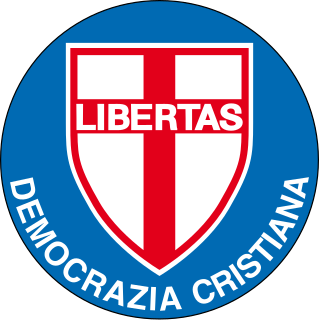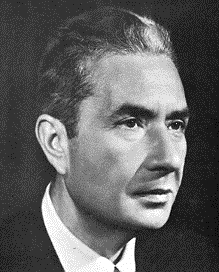Results
The following table summarises the results of all the lists reaching at least ten percent of the vote.
Nine Regional Councils elected administrations led by a Christian Democracy members backed by centrist alliances, while three regions, Piedmont, Liguria and Latium, changed sides, adding themselves to the traditional leftist strongholds Emilia-Romagna, Tuscany and Umbria: PCI and PSI shared three presidencies each. It was a big victory for Communist leader Enrico Berlinguer.

Christian Democracy was a Christian democratic political party in Italy.

In politics, centrism—the centre or the center —is a political outlook or specific position that involves acceptance or support of a balance of a degree of social equality and a degree of social hierarchy, while opposing political changes which would result in a significant shift of society strongly to either the left or the right.

Liguria is a coastal region of north-western Italy; its capital is Genoa. The region almost coincides with the Italian Riviera and is popular with tourists for its beaches, towns, and cuisine.
The results were a shock for the Christian Democrats which, even though they remained the majority party, saw the possibility of an historical defeat at national level in the next election. The party's secretary Amintore Fanfani was fired, and the government led by Aldo Moro began to run into more and more difficulties, leading to an early dissolution of the national legislature the following year.

Amintore Fanfani was an Italian politician and the Prime Minister of Italy for five separate runs. He was one of the best-known Italian politicians after the Second World War, and a historical figure of the left-wing section of the Christian Democracy party; he is also considered to have been one of the founders of the Italian centre-left.

Aldo Romeo Luigi Moro was an Italian statesman and a prominent member of the Christian Democracy party. He served as 38th Prime Minister of Italy, from 1963 to 1968, and then from 1974 to 1976. He was one of Italy's longest-serving post-war Prime Ministers, holding power for a combined total of more than six years. Due to his accommodation with the Communist leader Enrico Berlinguer, known as the Historic Compromise, Moro is widely considered one of the most prominent fathers of the Italian centre-left and one of the greatest and most popular leaders in the history of the Italian Republic. Moro was considered an intellectual and a patient mediator, especially in the internal life of his party. He was kidnapped on 16 March 1978 by the Red Brigades and killed after 55 days of captivity.
This page is based on this
Wikipedia article Text is available under the
CC BY-SA 4.0 license; additional terms may apply.
Images, videos and audio are available under their respective licenses.

Elections to the European Parliament were held in Italy on 12 and 13 June 2004.

General elections were held in Italy on Sunday 25 May 1958, to select the Third Republican Parliament. The number of MPs to be elected was calculated upon the population's size for the last time.

General elections were held in Italy on 3 June 1979, to select the Eighth Republican Parliament. This election was called just a week before the European vote: the failure to hold the two elections at the same time caused much criticism for wasting public money.

General elections were held in Italy on 14 June 1987, to select the Tenth Republican Parliament. This election marked the final inversion of the trend of the entire republican history of Italy: for the first time, the distance between the Christian Democrats and the Communists grew significantly instead of decreasing, and this fact was seen as the result of the deindustrialization of the country. The growth of the service sector of the economy, and the leadership of former PM Bettino Craxi, gave instead a new strength to the Socialists. A remarkable novelty was the rise of the new Green Lists, while a new party obtained its first two parliamentary seats: the Northern League.

General elections were held in Italy on 5 and 6 April 1992 to select the Eleventh Republican Parliament. They were the first without the traditionally second most important political force in Italian politics, the Italian Communist Party (PCI), which had been disbanded in 1991. It was replaced by a more social-democratic oriented force, the Democratic Party of the Left (PDS), and by a minority entity formed by members who did not want to renounce the communist tradition, the Communist Refoundation Party (PRC). However, put together they gained around 4% less than what the already declining PCI had obtained in the 1987 Italian general election, despite PRC had absorbed the disbanded Proletarian Democracy (DP).

The first elections for the European Parliament in Italy were held on 10 June 1979.

The European Parliament election of 2009 in Italy was held on Saturday 6 and Sunday 7 June 2009, as decided by the Italian government on 18 December 2008. Italy elected 72 members of the European Parliament (MEPs).

The second elections for the European Parliament in Italy were held on 17 June 1984.

The third elections for the European Parliament in Italy were held on 18 June 1989.

The European Parliament election of 1994 in Italy was the election of the delegation from Italy to the European Parliament in 1994.

The European Parliament election of 1999 in Italy was the election of the delegation from Italy to the European Parliament in 1999.

The Politics of Lombardy, Italy, takes place in a framework of a semi-presidential representative democracy, whereby the President of the Region is the head of government, and of a pluriform multi-party system. Legislative power is vested in the Regional Council of Lombardy, while executive power is exercised by the Regional Government led by the President, who is directly elected by the people. The current Statute, which regulates the functioning of the regional institutions, has been in force since 2008.

The Politics of Emilia-Romagna, Italy takes place in a framework of a presidential representative democracy, whereby the President of Regional Government is the head of government, and of a pluriform multi-party system. Executive power is exercised by the Regional Government. Legislative power is vested in both the government and the Legislative Assembly.

The Lombard regional election of 1995 took place on 23 April 1995. The 6th term of the Regional Council was chosen.

The Sardinian regional election of 2009 took place on 15–16 February 2009.

A large round of regional elections in Italy took place on 28–29 March in 13 regions out of 20, including nine of the ten largest ones: Lombardy, Campania, Veneto, Lazio, Piedmont, Emilia-Romagna, Apulia, Tuscany and Calabria.

The Italian regional elections of 1970 were held on June 7. Even if the regional system was conceived by the Italian Constitution in 1948, the five autonomous regions were the sole to be immediately established. The fifteen ordinary regions were indeed created in 1970 with the first elections.

The Italian regional elections of 1980 were held on June 8. The fifteen ordinary regions, created in 1970, elected their third assemblies.

The Italian regional elections of 1985 were held on May 12. The fifteen ordinary regions, created in 1970, elected their fourth assemblies.

The Italian regional elections of 1990 were held on May 16. The fifteen ordinary regions, created in 1970, elected their fifth assemblies.




























